Description
Buy Liberty Cap Mushrooms Colorado | Liberty Cap Mushrooms for sale Denver.
Buy Liberty Cap Mushrooms colorado. Buy Liberty Cap Mushrooms. If you want to grow your own magic mushrooms, you have several options to start with. You can buy a ready-made mushroom grow kit, but you can also buy a spore syringe. With spore syringes, you can apply the actual spores of the mushrooms in the breeding tank. All our spore syringes are produced in a sterile environment. This is to ensure that they are of high quality. Buy Liberty Cap Mushrooms online CO.
Price of Liberty Cap Mushrooms Denver | Cheap Liberty Cap Mushrooms Colorado.
All our spore syringes contain 20ml of spore suspension. Here you can get between 5 and 10 batches. Of course, the number of magic mushrooms you get from a spore syringe depends on the cultivation method. Either way, our fresh magic mushroom spore syringes provide multiple batches of delicious magic mushrooms.
Buy Liberty Cap Mushrooms Colorado, Purchase Liberty Cap Mushrooms Colorado, Liberty Cap Mushrooms for sale Colorado, Where to buy Liberty Cap Mushrooms in Colorado, Liberty Cap Mushrooms online Colorado, Colorado Liberty Cap Mushrooms purchase, Order Liberty Cap Mushrooms Colorado, Legal Liberty Cap Mushrooms Colorado, Best Liberty Cap Mushrooms Colorado, Liberty Cap Mushrooms near me Colorado, Colorado Liberty Cap Mushrooms vendor, Liberty Cap Mushrooms dispensary Colorado, Buy Liberty Cap, Mushrooms online Colorado, Get Liberty Cap Mushrooms Colorado, Find Liberty Cap Mushrooms Colorado, Cheap Liberty Cap Mushrooms Colorado, Quality Liberty Cap Mushrooms Colorado, Liberty Cap Mushrooms shop Colorado, Liberty Cap Mushrooms market Colorado, Safe Liberty Cap Mushrooms Colorado, Liberty Cap Mushrooms delivery Colorado, Liberty Cap Mushrooms source Colorado, Local Liberty Cap Mushrooms Colorado, Liberty Cap Mushrooms supplier Colorado, Affordable Liberty Cap Mushrooms Colorado, Legal buy, Liberty Cap Mushrooms Colorado, Top Liberty Cap Mushrooms Colorado, Liberty Cap Mushrooms deals Colorado, Discount Liberty Cap Mushrooms Colorado, Reputable Liberty Cap Mushrooms Colorado, Trusted Liberty Cap Mushrooms Colorado, Verified Liberty Cap Mushrooms Colorado, Liberty Cap Mushrooms provider Colorado, Authentic Liberty Cap Mushrooms Colorado, Liberty Cap Mushrooms USA Colorado, Liberty Cap Mushrooms information Colorado, Liberty Cap Mushrooms guide Colorado.
Purchase Liberty Cap Mushrooms online Denver | Were to buy Liberty Cap Mushrooms online Colorado.
You can also grow mushrooms with spore ampoules. These vials or ampoules are extremely suitable for growing magic mushrooms. They are produced in a sterile environment and therefore remain of high quality. This will also provide you with large amounts of magic mushrooms. The spore ampoules contain trace amounts of liquid that comes from collecting spores from the hats of magic mushrooms. It is therefore often said that spore ampoules yield more mushrooms in cultivation than spore syringes for mushrooms.
Denver Liberty Cap Mushrooms Dispensary | Colorado Liberty Cap Mushrooms Shop.
If you want to get started growing your own magic mushrooms, you can choose to buy spore prints. With a spore print you get a collection of spores. With this spore print, you can quickly start growing your own magic mushrooms. To ensure that all spore prints are of the highest possible quality, they are created in a sterile environment. By keeping the spore prints in a cold and dark environment, you can keep them for years before they stop growing mushrooms.
Best magic mushroom Dispensary Denver Colorado | How to get mushroom online in Denver.
All our spore syringes contain 20ml of spore suspension. Here you can get between 5 and 10 batches. Of course, the number of magic mushrooms you get from a spore syringe depends on the cultivation method. Either way, our fresh magic mushroom spore syringes provide multiple batches of delicious magic mushrooms.
Are spores from magic mushrooms legal for sale? | Cheap Liberty Cap Mushrooms Denver.
Buying spores from magic mushrooms is completely legal in the Netherlands. This while buying magic mushrooms is not legal. That’s why you can visit Mushroom shop today only buy magic mushrooms grow kits and spores from magic mushrooms. This is allowed under Dutch law. Most mushroom spores are bought online via smartshop webshops.
When do you buy magic mushrooms spores | Purchase Liberty Cap Mushrooms CO.
The cultivation of magic mushrooms is something many Dutch people do. When you have more experience, it is time to make the step from a mushroom grow kit to mushroom spores. This requires a little more experience, but you can get more mushrooms from this. That is why spore syringes for magic mushrooms are popular among mushroom growers. However, when you start growing magic mushrooms, it is better to opt for ready-made mushroom growkits.
Buy magic mushrooms spores online | Liberty Cap Mushrooms where to buy.
Do you want to trace mushrooms, medicinal mushrooms or microdosing buy truffles then it is best to do this online. In online smart shops, high-quality traces are properly stored in cool and dark conditions. This way, you will always receive high-quality mushroom spores sent home. Therefore, order your mushroom spores online at 24High. Whether it concerns a mushroom spore syringe or mushroom spores ampoules, we ensure that these are delivered to your home quickly and discreetly.
can you buy mushrooms in colorado, colorado mushrooms for sale, denver colorado mushroom shop, where to buy mushrooms in denver, mushrooms legal in colorado where to buy, can i buy mushrooms in colorado, buying mushrooms in colorado, mushrooms for sale colorado, buy mushrooms in colorado, mushroom farms in colorado, where can i buy mushrooms in colorado, mushrooms for sale in colorado, where to buy mushrooms in colorado, mushroom companies in denver colorado, where can you buy mushrooms in colorado, mushroom shop denver co, buy psilocybin mushrooms australia, buy psilocybin mushrooms near me.
Growing magic mushrooms from spores
When you get started with growing magic mushrooms from spores, you can do this in various ways. It is important that you always work sterile. In case of contamination, this can have disastrous consequences for your mushroom harvest. That is why, when necessary, we supply various materials to work sterile when ordering spores.
You can grow magic mushrooms using a clear plastic container or an aquarium. A nutrient medium can consist of a combination of rice flour and vermiculite, for example. You can sterilize this with a regular pan, although a pressure cooker works much better. However, other breeding grounds are also possible, such as rye, grain grass seed, bird seed or coffee. This can differ per mushroom species that you want to grow from your mushroom spores. Nutrients are also sometimes called substrates, by the way.
Buy liberty cap mushrooms online
Buy liberty cap mushrooms online, buy liberty cap online, gaf liberty cap sheet for sale, buy liberty cap isaac online, order liberty cap mushroom online, hallucinogenic liberty cap mushroom buy online, liberty cap mushroom dried buy online
Firstly, the Liberty cap mushroom Scientifically known as Psilocybin semilanceata, is a psilocybin or “enchantment” mushroom that contains the psychoactive mixes psilocybin. Who’s body separates into psilocin and the alkaloid baeocystin. Purchase freedom tops online is the most generally conveyed enchantment mushrooms in nature and potentially the most powerful.
They are yellow to brown, secured with spiral notches when damp, and blur to a lighter shading as they develop. Their stipes will in general be thin and long and have a similar shading or somewhat lighter than the top. gaf liberty cap sheet for sale
How To Take Liberty Caps
Secondly, For a good effect, you should take the Liberty caps on an empty stomach. You can chew the magic mushrooms and swallow them afterward. The longer you chew, the better the psychoactive substances are absorbed by your body. Sadly it doesn’t taste too well. Buy magic mushrooms – The Best place to buy liberty cap isaac online
Alternate Method
Furthermore, For this reason, you can also choose to make mushroom tea. Buy liberty caps Online. Cut them into little pieces and steep them in hot water. Buy Liberty Cap
It is important that the water does not boil, because this breaks down the psilocybin. You could put the teapot on a hot plate to let it steep as slowly as possible. Drink the tea, including the bits of magic mushroom. If you add some lemon juice to the mushroom tea, the psilocybin in the water is converted into psilocin. – Buy liberty caps Online . Buy Liberty Cap Mushrooms
Liberty cap magic mushroom
As stated above, it is psilocin that is responsible for the psychedelic effect. Lemon juice, therefore, ensures that your trip starts faster. As an additional advantage, you will suffer fewer stomach aches. Buy liberty caps online
It’s autumn, the best season for mushroom pickers. And mushrooms – specifically magic ones – are in the spotlight. A growing body of research is showing that psilocybin, the main psychoactive compound in magic mushrooms, has potential in treating psychological disorders like depression, addiction and PTSD. The state of Oregon just voted to legalise the mushrooms for therapeutic use – a US first.
Of the nearly 200 species of psychedelic mushrooms that have been identified worldwide, only one – Psilocybe semilanceata – grows in any abundance in northern Europe. Like many mushrooms, Psilocybe semilanceata is generally known not by its scientific designation, but by its common or folk name, the “liberty cap” mushroom.
For years, this bothered me. As a Roman historian, I know the liberty cap (the pileus, in Latin) as a hat given to a Roman slave on the occasion of their being freed. It was a conical felt cap, shaped like that of a smurf, and which undeniably bears a clear resemblance to Psilocybe semilanceata’s distinctive pointy cap.
But how on earth did an obscure Roman social practice end up lending its name to a modern psychedelic? As I soon discovered, the answer takes us through an assassination, a number of revolutions, a bit of poetry, a dash of xenophobia, and a very unusual scientific discovery.
Liberty Cap Mushrooms tips Colorado, How to buy Liberty Cap Mushrooms Colorado, Best place to buy Liberty Cap Mushrooms Colorado, Liberty Cap Mushrooms pricing Colorado, Colorado Liberty Cap Mushrooms shop, Buy Liberty Cap Mushrooms Denver, Buy Liberty Cap Mushrooms Boulder, Buy Liberty Cap Mushrooms Colorado Springs, Buy Liberty Cap Mushrooms Fort Collins, Buy Liberty Cap Mushrooms Aurora, Buy Liberty Cap Mushrooms Lakewood, Buy, Liberty Cap Mushrooms Thornton, Buy Liberty Cap Mushrooms Arvada, Buy Liberty Cap Mushrooms Westminster, Buy Liberty Cap Mushrooms Pueblo, Buy Liberty Cap Mushrooms Centennial, Buy Liberty Cap Mushrooms Greeley, Buy Liberty Cap Mushrooms Longmont, Buy Liberty Cap Mushrooms Loveland, Buy Liberty Cap Mushrooms Broomfield, Buy Liberty Cap Mushrooms Grand Junction, Buy Liberty Cap Mushrooms Castle Rock, Buy Liberty Cap Mushrooms Commerce City, Buy Liberty Cap Mushrooms Parker, Buy Liberty Cap Mushrooms Littleton, Buy Liberty Cap Mushrooms Brighton, Buy Liberty Cap Mushrooms Northglenn, Buy, Liberty Cap Mushrooms Englewood, Buy Liberty Cap Mushrooms Wheat Ridge, Buy Liberty Cap Mushrooms Fountain, Buy Liberty Cap Mushrooms Lafayette, Buy Liberty Cap Mushrooms Windsor, Buy Liberty Cap Mushrooms Erie, Buy Liberty Cap Mushrooms Evans, Buy Liberty Cap Mushrooms Golden, Buy Liberty Cap, Mushrooms Louisville, Buy Liberty Cap Mushrooms Montrose, Buy Liberty Cap Mushrooms Durango, Buy Liberty Cap Mushrooms Cañon City, Buy Liberty Cap Mushrooms Sterling, Buy Liberty Cap Mushrooms Johnstown, Buy Liberty Cap Mushrooms Green Valley Ranch, Buy Liberty Cap Mushrooms Federal Heights, Buy Liberty Cap Mushrooms Trinidad, Buy Liberty Cap Mushrooms Firestone, Buy Liberty Cap Mushrooms Glendale, Buy Liberty Cap Mushrooms Mead, Buy Liberty Cap Mushrooms Wellington, Buy Liberty Cap Mushrooms Fort Lupton, Buy Liberty Cap Mushrooms Woodland Park, Buy Liberty Cap Mushrooms Cortez, Buy Liberty Cap Mushrooms Delta, Buy Liberty Cap Mushrooms Brush, Buy Liberty Cap Mushrooms Estes Park, Buy Liberty Cap Mushrooms Lamar, Buy Liberty Cap Mushrooms Rifle, Buy Liberty Cap Mushrooms Sheridan, Buy Liberty Cap Mushrooms Manitou Springs, Buy Liberty Cap Mushrooms Dacono, Buy Liberty Cap Mushrooms Craig, Buy Liberty Cap Mushrooms Steamboat Springs, Buy Liberty Cap Mushrooms Glenwood Springs, Buy Liberty Cap Mushrooms Fruita.

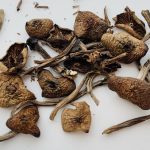
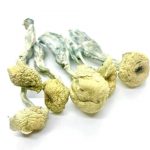
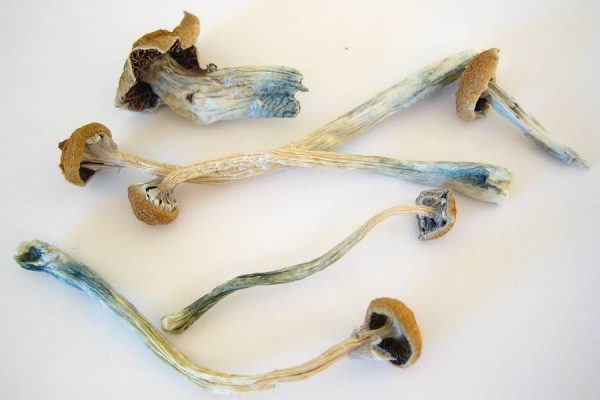

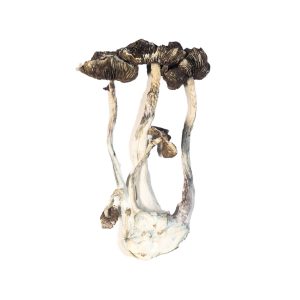
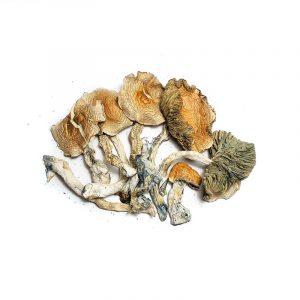
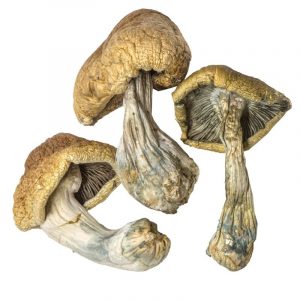
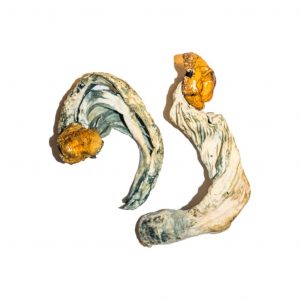
Ava –
Potent, Thanks
Michael –
Not cheap but one of the best out there
Jack –
The order was received faster than expected
Mia –
I love these, always makes the day go by and keeps me awake with such a good mood
Matthew –
Haven’t tried yet but they look MEAN!! cant wait!
Jacob –
Absolutely delicious. I pan fried and pressed with some spices. amazing colours and texture. Liberty cap mushroom is the best
Logan –
So happy to find somewhere with liberty caps! Regular customer now! Wish you were closer so I could see you at the market! Might try to get to London before Xmas and will definitely order a kit to grow some! Cheers. Adam.
Madison –
Really good high, the high lasted wayyyy longer than expected. (6+ hours)